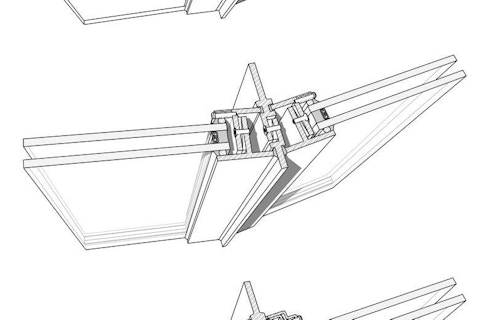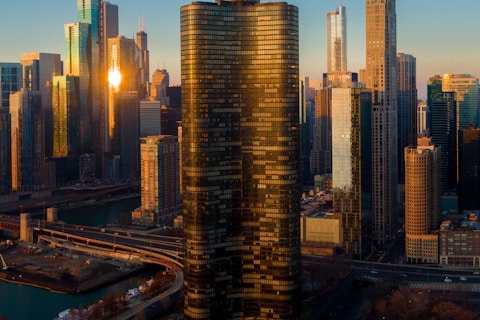Facade performance in the absence of fossil fuel
Like many of you, I spend most of my time trying to influence projects to be more energy efficient, emit less carbon, and be more resilient in the face of a changing climate. I consider myself well informed on the intersection of climate change and buildings - I know we’re in a climate emergency and that we need to do everything we can - and fast. What more is there to know? So, I generally just read the media headlines and skim a few relevant articles and reports. But I never felt there was a lot of value in just reaffirming my understanding of the climate crisis by spending time delving into the latest data, reading the IPCC reports, and scouring my country’s climate inventory… until I did just that. I’ll spare you all the gory details, but I encourage you to do the same. Take control of the facts and use it to educate and build literacy in the industry. One key takeaway for me was linking Canada’s climate commitments and latest greenhouse gas (GHG) inventory with the current state of the industry; where are the codes at and does that align with the science? What are clients asking for and does that align with the climate emergency? What is the market actually building today and how far are we from where we need to be? Spoiler alert - no, no and far.
What if we designed the building envelope like we can’t use fossil fuels (which, it turns out, we can’t)?
In summary, Canada would need to build every new building to near zero carbon (i.e. at least 80% lower GHG emissions than the code minimums) immediately and retrofit about a third of the existing building stock every decade for the next 3 decades to meet our targets. That would mean every project you touch in your office is zero or very close to zero carbon. I’m willing to bet that’s not the case for most of you (by the way, it’s not for me either). The majority of GHGs from buildings come from the use of fossil fuels - about 2 to 1 compared to emissions from electricity. That ratio is getting bigger as electricity emissions continue to decrease in Canada, with a grid slated to be 90% clean by 2030, up from 83% today. As for our buildings’ fossil fuel-based emissions, there will be no magic switch. Renewable natural gas and hydrogen will play some minor role in decarbonization, but they are currently not (nor planned to be by any credible predictions) scalable solutions. That leaves us with the most likely pathway to decarbonization being fuel switching - that is, to change our heating sources from fossil fuel-based to electricity. A dear colleague will remind me that there are also other pathways, including the increased use of waste to energy sources and the proper use of biomass - yes to those too! But regardless of the pathway, the solutions require a change from the status quo; there is no way around the magnitude of work ahead of us at the building scale.
Let me (finally) circle back to the title of this article. The building envelope has always struggled to upsell its high-performance alternatives on most projects. This is not surprising given the cheap and abundant fossil fuel-based heating sources that we have, which can create gobs of heat in a small footprint. A higher performing envelope rarely pays back on energy, and a poorly performing one perpetuates the use of conventional heating sources. And it’s not to say that we don’t know how - in fact, Canada is building some of the largest scale Passive House projects in the world.
What if we designed the building envelope like we can’t use fossil fuels (which, it turns out, we can’t)? What happens if you don’t mitigate your heating loads with a high-performance envelope when you now have to heat with an electric heat pump instead of boilers? It turns out, heat pumps cost more, can’t provide as high temperatures, can’t generate as much heat per unit footprint, and if oversized, can challenge the constraints of electrical service at a particular site (especially true for existing buildings). What if we designed the building envelope to make buildings more resilient? What happens in the middle of winter when the power goes out and hundreds of thousands of people are stranded in their glass residential towers (remember 2013, Toronto)?
The values we hold and the outcomes we want have changed. We no longer need energy efficient buildings that are optimized based on their payback periods. We need and want high performance / carbon neutral buildings that mitigate our impact on climate change and adapt to an already changing climate - and it just so happens that to get there, efficiency, especially in the building façade, is a prerequisite.
PS - there is of course a lot more to say about the building envelope’s contribution to sustainable buildings, from durability to health and comfort to reductions in embodied carbon. As a lowly mechanical engineer, I’ll leave those eloquent arguments to my colleagues.

Christian Cianfrone
Manager, Mechanical Design & Energy Optimization
EllisDon Corp.
Christian is the Manager, Mechanical Design & Energy Optimization at EllisDon
Vancouver, British Columbia, Canada
Looking for something specific?
Search our extensive library.
FTI’s SKINS email is the central source for the latest in building skin trends and research.
All emails include an unsubscribe link. You may opt out at any time. See our privacy policy.









